
Canals to Castles: An Amsterdam & Prague 8-Day Itinerary
 8 Day Tour of Amsterdam and Prague
8 Day Tour of Amsterdam and Prague
Overview
Trip Map
Itinerary
Inclusions
Reviews







8 Days 7 Nights
Best Time: Jan-Dec
Cultural Exploration
Beer Drinkers
Embark on an 8-day trip from Amsterdam to Prague, exploring complimentary views of history, culture and food. In Amsterdam, trace beautiful canals past picturesque homes to the Rijksmuseum and the Anne Frank House, before experiencing the city's lively markets. Then head to Prague to admire its Gothic, Renaissance, and Baroque architecture, from Prague Castle to the Old Town Square and the Charles Bridge. Enjoy cozy cafés, traditional Czech dishes, & renowned Czech beer. The journey promises enchanting atmospheres and rich histories in two of Europe's most captivating cities, made easy with detailed travel guidance and private guided tours.
- Discover the UNESCO-World-Heritage site of Grachtengordel, the storied canals of Amsterdam.
- In Amsterdam canal cruise amidst 17th-century homes and beneath charming, bicycle filled bridges.
- Take a river cruise in Prague and enjoy its Baroque beauty from both land and water.
- Take a private beer tasting tour in Prague (or customize by adding a culinary tour or other option)
- Enjoy the historic parks of Petrin and Vysehrad, with their stunning views in the heart of Prague.
Embark on an 8-day trip from Amsterdam to Prague, exploring complimentary views of history, culture and food. In Amsterdam, trace beautiful canals past picturesque homes to the Rijksmuseum and the Anne Frank House, before experiencing the city's lively markets. Then head to Prague to admire its Gothic, Renaissance, and Baroque architecture, from Prague Castle to the Old Town Square and the Charles Bridge. Enjoy cozy cafés, traditional Czech dishes, & renowned Czech beer. The journey promises enchanting atmospheres and rich histories in two of Europe's most captivating cities, made easy with detailed travel guidance and private guided tours.
- Discover the UNESCO-World-Heritage site of Grachtengordel, the storied canals of Amsterdam.
- In Amsterdam canal cruise amidst 17th-century homes and beneath charming, bicycle filled bridges.
- Take a river cruise in Prague and enjoy its Baroque beauty from both land and water.
- Take a private beer tasting tour in Prague (or customize by adding a culinary tour or other option)
- Enjoy the historic parks of Petrin and Vysehrad, with their stunning views in the heart of Prague.

Old Town
Historic Landmarks

Museum Quarter
Museums & Galleries

Jordaan
Nightlife & Local Scene

Eastern Districts
Museums & Galleries

Anne Frank House
Historic Landmarks

Prague Castle
Castles & Chateaux

Charles Bridge
Historic Landmarks

Wenceslas Square
European History

Old Town
Historic Landmarks
Must see sights

Old Town
Historic Landmarks

Museum Quarter
Museums & Galleries

Jordaan
Nightlife & Local Scene

Eastern Districts
Museums & Galleries

Anne Frank House
Historic Landmarks

Prague Castle
Castles & Chateaux

Charles Bridge
Historic Landmarks

Wenceslas Square
European History

Old Town
Historic Landmarks
Starting from
$1692
per person
 Not included
Not included Secure Your Customizable Trip
Enter your details to embark on a journey that can be tailored just for you.
Start
Travelers
0 travelers
Add Room
Remove Room
Preferred Hotel Stars
Select Hotel Stars
Craft Your Own Itinerary
Select your interests and destinations for a trip plan inspired by you.
Trip Map & Itinerary
Enable/Disable Map Scrolling
Click To Make Map Interactive

Trip Timeline
 Edit Details
Edit DetailsArrival
3 nights
Amsterdam
Netherlands
Air: 1h45m
4 nights
Prague
Czech Republic
Departure
Day-By-Day Itinerary
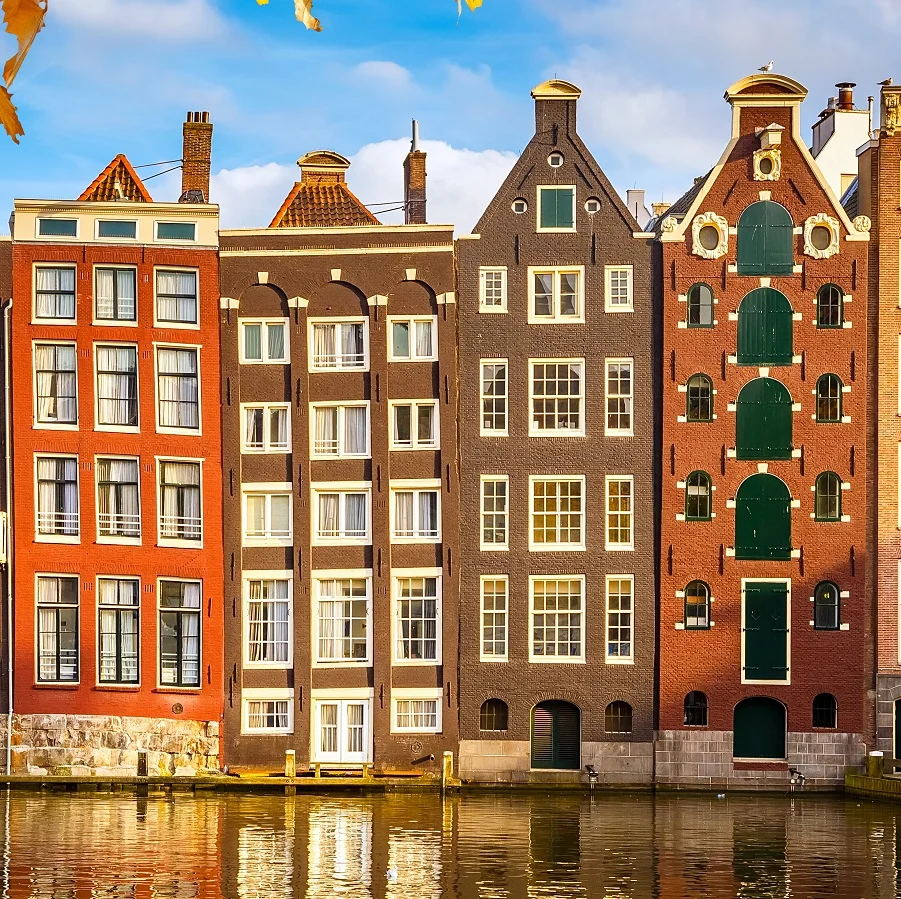
Day 1
Arrive Amsterdam
Day 1
Arrive Amsterdam



To Be Determined
Arrival in Amsterdam Airport and Transfer by Taxi or Train
Amsterdam has one main airport, Amsterdam Airport Schiphol. Taxis are available directly at the terminal exit, or you can arrange a private transfer for added convenience. Uber is also available. The cheapest and often fastest way to reach central Amsterdam from the airport is by train, which delivers you in about 20 minutes to Amsterdam's Central station (Centraal), from where you can walk to your hotel, take public transport, or easily hail a taxi that will be much less expensive than from the airport. The NS train station is located directly below the airport terminal, so all you need to do is follow the signs.

Day 1
Arrive Amsterdam


Day 1
Arrive Amsterdam




To Be Determined:
Transfer from Airport
Mid-Day to Late Afternoon:
Old Town
Late Afternoon/Early Evening:
Grachtengordel

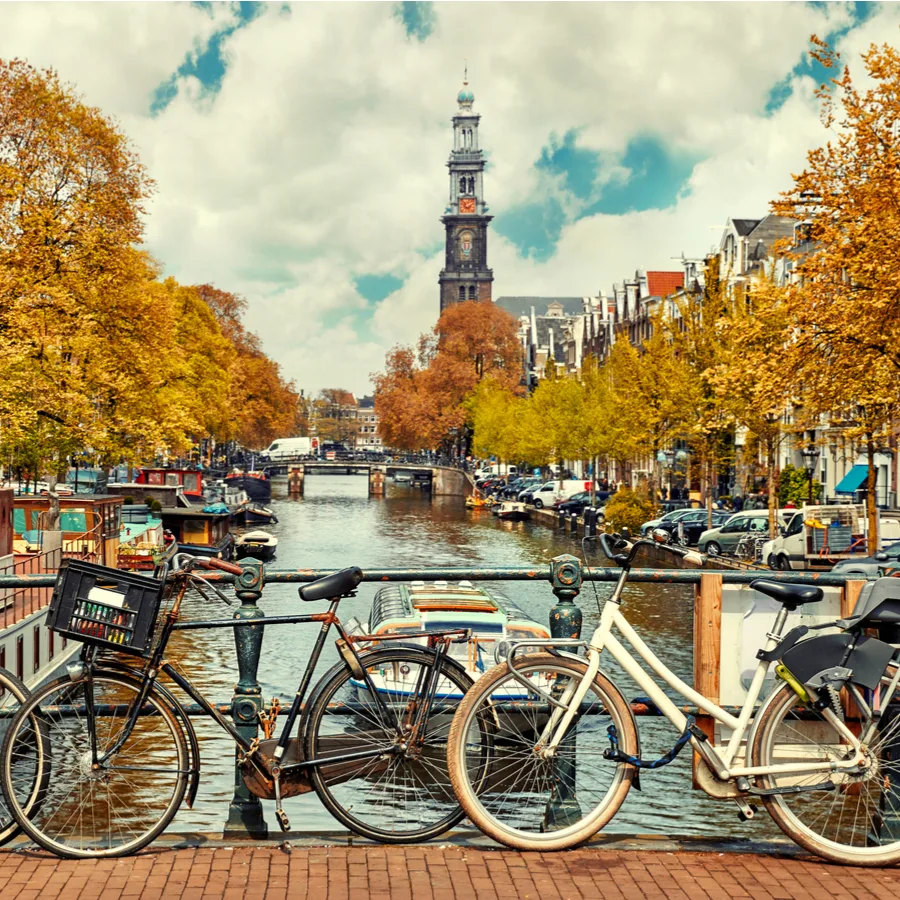
Day 2
Amsterdam
Day 2
Amsterdam



9:00 AM - 12:00 PM
Privately Guided Walking Tour of Amsterdam
Make your introductions to Amsterdam with this 3-hour privately-guided walking tour. After picking you up from your hotel, your professional guide will lead you past many of the greatest highlights of the city, including its center, as well as the Jordaan, the Grachtengordel, and the infamous Red-Light District. The guide will explain how all these feature in the citiy's history and contemporary life. Your guide will be happy to share some great tips for the rest of your stay.

Day 2
Amsterdam


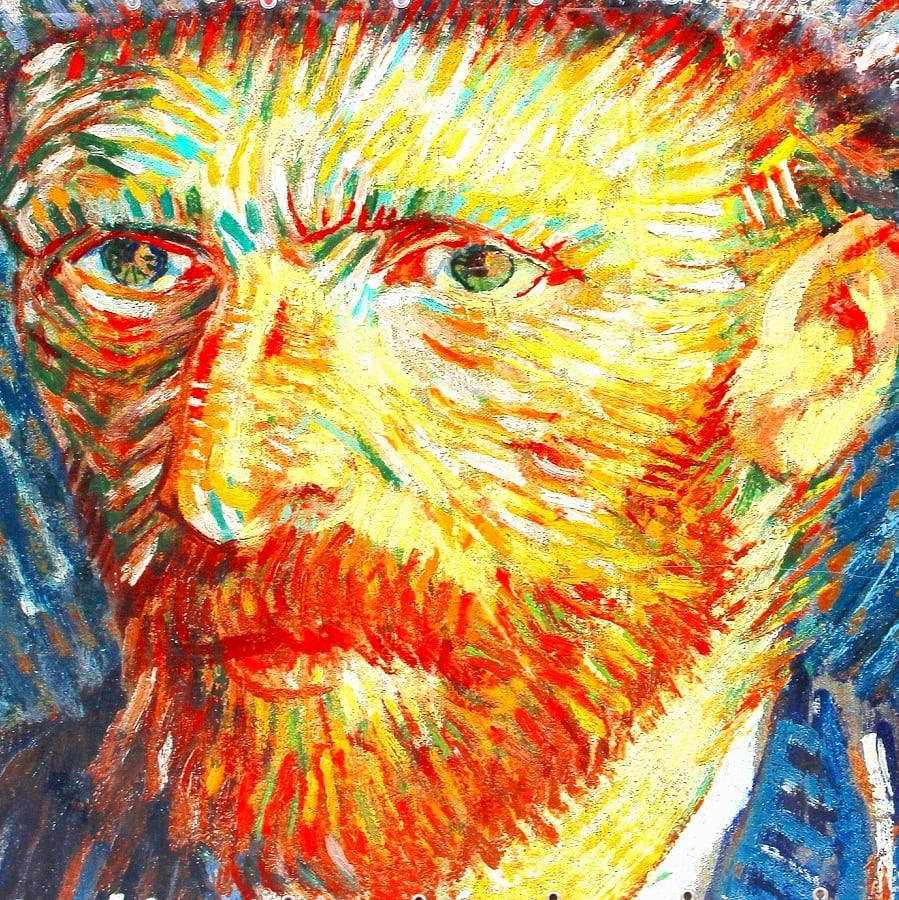
Day 3
Amsterdam
Day 3
Amsterdam



Morning/Mid-Day
Impress yourself in the Museum Quarter
Arranged in a tight knot on the aptly named Museumplein, Amsterdam's premier world-class museums include the Van Gogh Museum (pre-booked tickets required), the Rijks Museum with its collection of Rembrandts, and the Stedelijk Museum of modern and contemporary art. The Amsterdam Diamond Museum is nearby as well. Choose to visit one or more of these wonderful cultural venues from the detailed descriptions provided in the Full Itinerary.

Moco Museum
Contemporary in an Old City Can Be Beautiful Too
Show More

Diamond Museum
This museum will defintely make your eyes sparkle.
Show More

Rijks Museum Shop
Find Tickets and Trinkets related to the Rijks- and Van Gogh Museums
Show More

Van Gogh Museum
The Van Gogh Museum - How Can't You Be Impressed?
Show More

Moco Museum
Contemporary in an Old City Can Be Beautiful Too
Show More

Diamond Museum
This museum will defintely make your eyes sparkle.
Show More

Rijks Museum Shop
Find Tickets and Trinkets related to the Rijks- and Van Gogh Museums
Show More

Van Gogh Museum
The Van Gogh Museum - How Can't You Be Impressed?
Show More
prev
next

Day 3
Amsterdam


Moco Museum
 Highlight of Museum Quarter
Highlight of Museum QuarterContemporary in an Old City Can Be Beautiful Too
The MoCo Museum dedicates itself to showcasing modern, cutting-edge works from some of the most influential artists of the 20th and 21st centuries. Situated in a renovated townhouse in the heart of Amsterdam, it offers a dynamic and engaging art experience, featuring both permanent and temporary exhibitions. Highlights include pieces by Maria Abramović, Banksy, Andy Warhol, and other iconic figures who have shaped the contemporary art scene. The museum's intimate scale allows for a personal exploration of the artworks

Diamond Museum
 Highlight of Museum Quarter
Highlight of Museum QuarterThis museum will defintely make your eyes sparkle.
The Diamant Museum in Amsterdam delves into this dazzling gem's history, highlighting Amsterdam's significance in the diamond industry since the 16th century. Simultaneously, it showcases its journey from raw stones to exquisite jewelry, emphasizing the art of diamond cutting and polishing, and, of course, features a collection of gems and artifacts,.
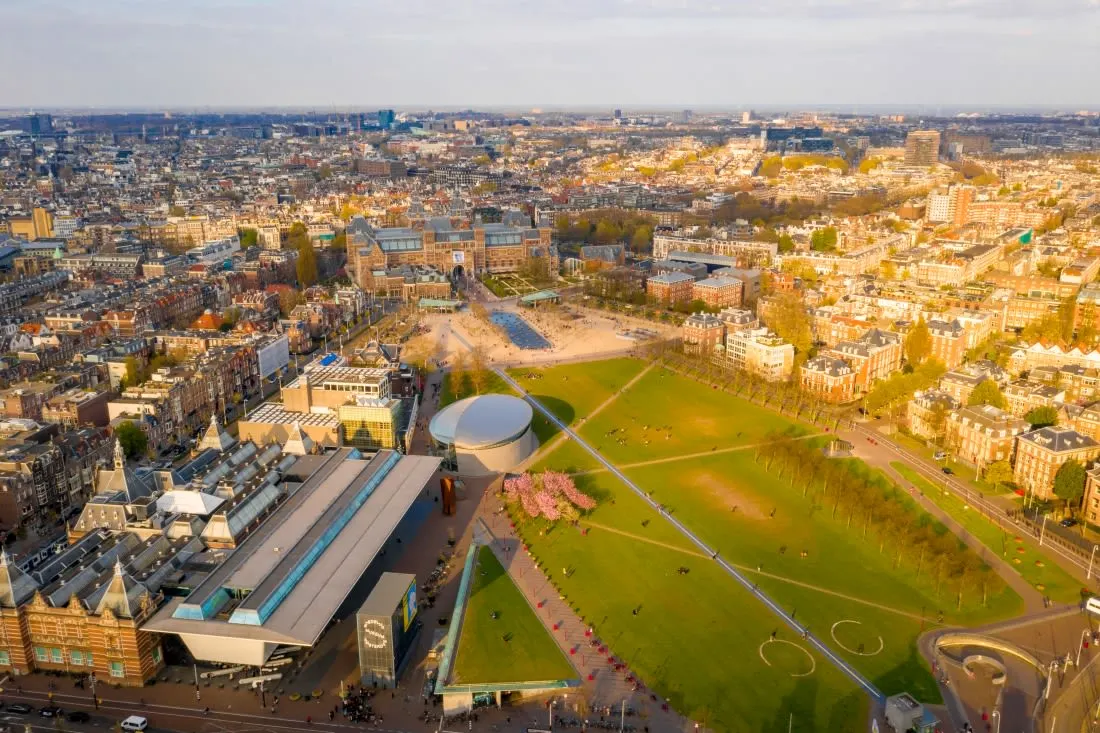
Rijks Museum Shop
 Highlight of Museum Quarter
Highlight of Museum QuarterFind Tickets and Trinkets related to the Rijks- and Van Gogh Museums
Located on Museumplein (Museum Square), this convienent shop is operated by both museums to contend with the overflow at their respective ticket offices. Even this shop can become busy. However, if you don't plan on visiting the museums, but still want to pick up some souvenirs, this is your spot: both museums supply this store with their own merchandise.
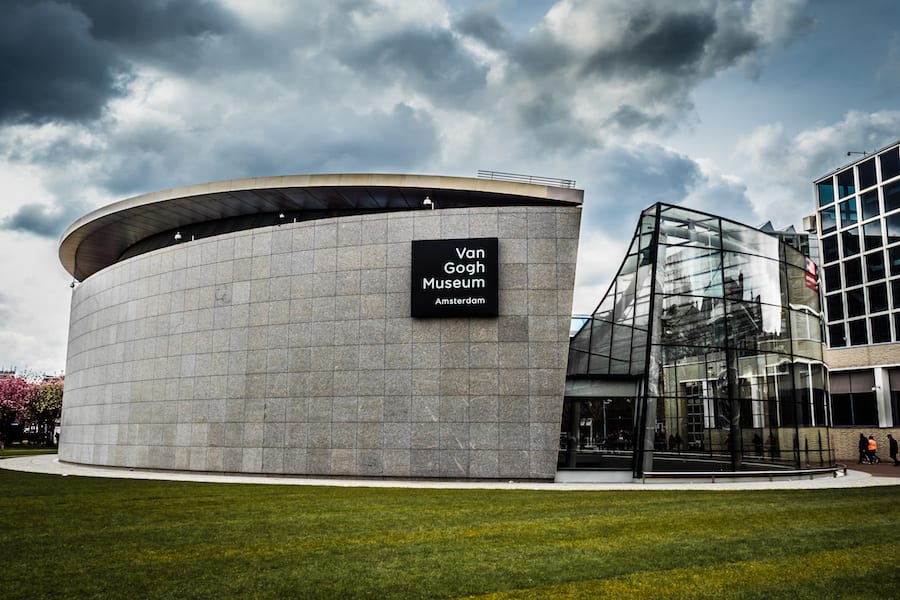
Van Gogh Museum
 Highlight of Museum Quarter
Highlight of Museum QuarterThe Van Gogh Museum - How Can't You Be Impressed?
Maybe no other artist since Michelangelo has touched the Western World as deeply as Vincent Van Gogh. His exhuberent palates of color, the frenetic pace at which he painted, the humanity of his subjects, not to mention the pathos of his own life, all combined to make unforgettable works - many of whic hare at this museum. Millions of words have been written about the man and his art; but somehow, seeing them live often leaves a person speechless.

Moco Museum
 Highlight of Museum Quarter
Highlight of Museum QuarterContemporary in an Old City Can Be Beautiful Too
The MoCo Museum dedicates itself to showcasing modern, cutting-edge works from some of the most influential artists of the 20th and 21st centuries. Situated in a renovated townhouse in the heart of Amsterdam, it offers a dynamic and engaging art experience, featuring both permanent and temporary exhibitions. Highlights include pieces by Maria Abramović, Banksy, Andy Warhol, and other iconic figures who have shaped the contemporary art scene. The museum's intimate scale allows for a personal exploration of the artworks

Diamond Museum
 Highlight of Museum Quarter
Highlight of Museum QuarterThis museum will defintely make your eyes sparkle.
The Diamant Museum in Amsterdam delves into this dazzling gem's history, highlighting Amsterdam's significance in the diamond industry since the 16th century. Simultaneously, it showcases its journey from raw stones to exquisite jewelry, emphasizing the art of diamond cutting and polishing, and, of course, features a collection of gems and artifacts,.

Rijks Museum Shop
 Highlight of Museum Quarter
Highlight of Museum QuarterFind Tickets and Trinkets related to the Rijks- and Van Gogh Museums
Located on Museumplein (Museum Square), this convienent shop is operated by both museums to contend with the overflow at their respective ticket offices. Even this shop can become busy. However, if you don't plan on visiting the museums, but still want to pick up some souvenirs, this is your spot: both museums supply this store with their own merchandise.

Van Gogh Museum
 Highlight of Museum Quarter
Highlight of Museum QuarterThe Van Gogh Museum - How Can't You Be Impressed?
Maybe no other artist since Michelangelo has touched the Western World as deeply as Vincent Van Gogh. His exhuberent palates of color, the frenetic pace at which he painted, the humanity of his subjects, not to mention the pathos of his own life, all combined to make unforgettable works - many of whic hare at this museum. Millions of words have been written about the man and his art; but somehow, seeing them live often leaves a person speechless.
prev
next


Day 4
Amsterdam to Prague
Day 4
Amsterdam to Prague




To Be Determined
Transfer to Airport by Taxi
Amsterdam has one main airport, Amsterdam Airport Schiphol. The most affordable and often fastest way to reach the airport is by train. Local direct trains to the airport depart every ten minutes, usually from platform 14a or platform 15, and get you there in about 20 minutes. Your hotel can arrange a reliable taxi or if you have the app, Uber is also a good option. You can also arrange a private transfer. If you are picked up about two hours and 45 minutes before your departure time, you should arrive at the airport with about two hours to spare, depending on traffic. If you are leaving during rush hour, you may want to budget an extra fifteen to thirty minutes.

Day 4
Amsterdam to Prague



Day 5
Prague
Day 5
Prague



9:00 AM - 12:30 PM
Prague Castle & Royal Route Guided Walk
On this charming guided walk, you will explore the Prague Castle, the largest castle complex in all of Europe. To reach the castle you will trace the Royal Coronation Route and cross the Charles Bridge, whose “speaking stones” reveal the amazing and often cruel history that occurred there. Your tour guide will then take you either through the castle courtyards and into the dramatic St. Vitus Cathedral in the center of the castle complex, or through the upper part of the castle district around the oversized palaces of the old Catholic nobility and the top of the Castle Steps for incomparable views over the red rooftops of the Little Quarter.

Charles Bridge
Cross the river dividing Prague's most historic neighborhoods, and experience one of Europe's most iconic landmarks.
Show More

Maltese Square & Lennon Wall
See a historic wall that has been covered in John Lennon-inspired graffiti since Communist days.
Show More

Prague Castle
Prague Castle is one of the main attractions in Prague and is also the largest castle complex in the world.
Show More

Charles Bridge
Cross the river dividing Prague's most historic neighborhoods, and experience one of Europe's most iconic landmarks.
Show More

Maltese Square & Lennon Wall
See a historic wall that has been covered in John Lennon-inspired graffiti since Communist days.
Show More

Prague Castle
Prague Castle is one of the main attractions in Prague and is also the largest castle complex in the world.
Show More

Charles Bridge
Cross the river dividing Prague's most historic neighborhoods, and experience one of Europe's most iconic landmarks.
Show More
prev
next

Day 5
Prague

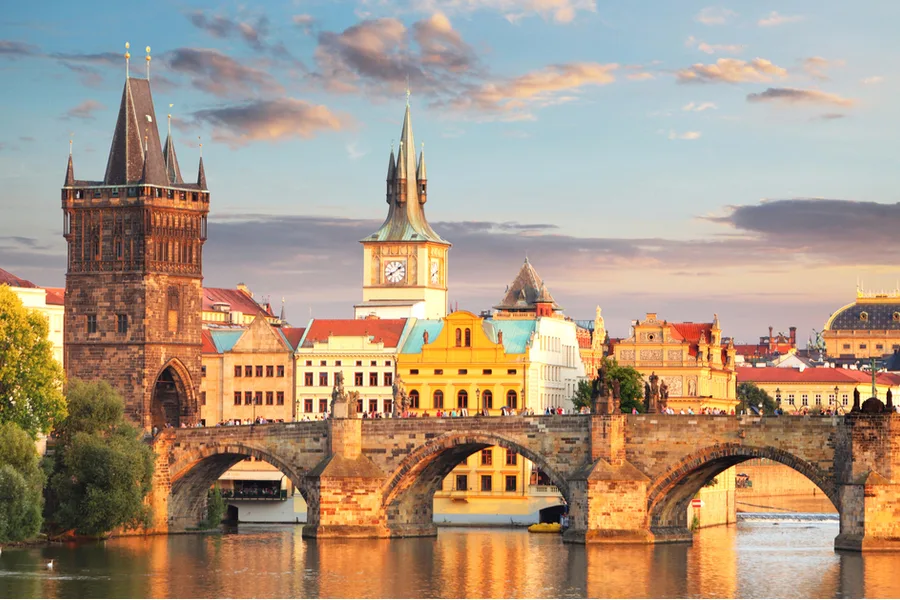
Charles Bridge
 Highlight of Royal Route Guided Tour
Highlight of Royal Route Guided TourCross the river dividing Prague's most historic neighborhoods, and experience one of Europe's most iconic landmarks.
Bridge construction began in 1357 under King Charles IV (hence the name), and it was the only bridge across the Vltava River until 1841. 30 baroque statues of saints line the bridge, and it is filled with street artists and entertainers. Not to be missed.

Maltese Square & Lennon Wall
 Highlight of Royal Route Guided Tour
Highlight of Royal Route Guided TourSee a historic wall that has been covered in John Lennon-inspired graffiti since Communist days.
The wall has been covered in graffiti since the 1960s, and during Communism anti-regime sentiment was common. John Lennon's assassination inspired grafitti reflecting his song, Imagine, which earned the wall its current moniker. It is now a favorite gathering place for tourists, and musicians sometimes congregate there as well. Just around the corner is the Maltese Square, which is one of Prague's more quaint and relaxed public spaces, despite being just off the main tourist route.

Prague Castle
 Highlight of Royal Route Guided Tour
Highlight of Royal Route Guided TourPrague Castle is one of the main attractions in Prague and is also the largest castle complex in the world.
The Prague Castle is the largest castle complex in the world with structures dating back to the 9th century. The St Vitus Cathedral and Basilica of St George can be found within the castle walls. The Prague Castle also includes several gardens, palaces, and a monastery. This castle was the seat of power for the Kings of Bohemia, Holy Roman Emperors, and presidents of former Czechoslovakia. Prague Castle is a UNESCO world heritage site and is one of the most visited places in the country.

Charles Bridge
 Highlight of Royal Route Guided Tour
Highlight of Royal Route Guided TourCross the river dividing Prague's most historic neighborhoods, and experience one of Europe's most iconic landmarks.
Bridge construction began in 1357 under King Charles IV (hence the name), and it was the only bridge across the Vltava River until 1841. 30 baroque statues of saints line the bridge, and it is filled with street artists and entertainers. Not to be missed.

Maltese Square & Lennon Wall
 Highlight of Royal Route Guided Tour
Highlight of Royal Route Guided TourSee a historic wall that has been covered in John Lennon-inspired graffiti since Communist days.
The wall has been covered in graffiti since the 1960s, and during Communism anti-regime sentiment was common. John Lennon's assassination inspired grafitti reflecting his song, Imagine, which earned the wall its current moniker. It is now a favorite gathering place for tourists, and musicians sometimes congregate there as well. Just around the corner is the Maltese Square, which is one of Prague's more quaint and relaxed public spaces, despite being just off the main tourist route.

Prague Castle
 Highlight of Royal Route Guided Tour
Highlight of Royal Route Guided TourPrague Castle is one of the main attractions in Prague and is also the largest castle complex in the world.
The Prague Castle is the largest castle complex in the world with structures dating back to the 9th century. The St Vitus Cathedral and Basilica of St George can be found within the castle walls. The Prague Castle also includes several gardens, palaces, and a monastery. This castle was the seat of power for the Kings of Bohemia, Holy Roman Emperors, and presidents of former Czechoslovakia. Prague Castle is a UNESCO world heritage site and is one of the most visited places in the country.

Charles Bridge
 Highlight of Royal Route Guided Tour
Highlight of Royal Route Guided TourCross the river dividing Prague's most historic neighborhoods, and experience one of Europe's most iconic landmarks.
Bridge construction began in 1357 under King Charles IV (hence the name), and it was the only bridge across the Vltava River until 1841. 30 baroque statues of saints line the bridge, and it is filled with street artists and entertainers. Not to be missed.
prev
next

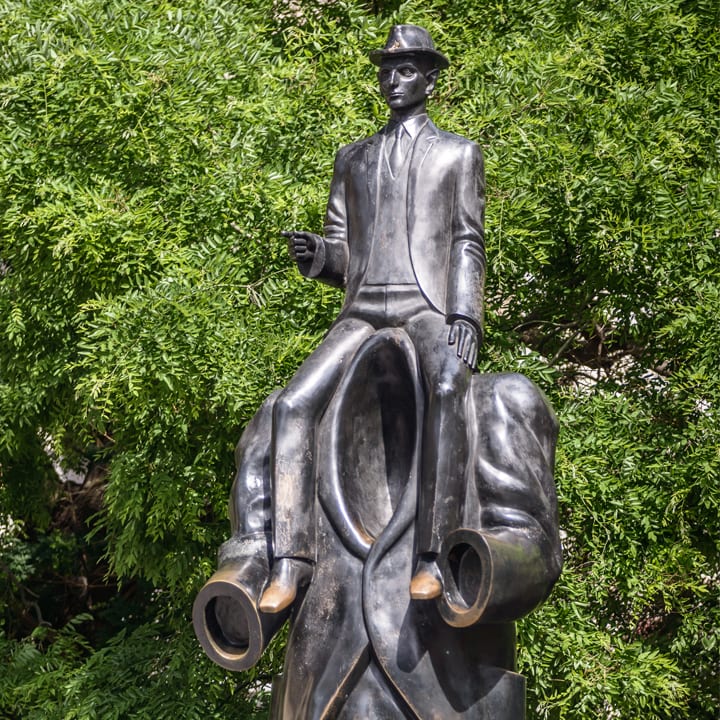
Day 6
Prague
Day 6
Prague



Morning/Mid-Day
Visit Prague's Jewish Quarter
Jews have lived in Prague since its beginnings in the 10th century and have endowed it with a rich heritage. The ghetto was created in the 12th century, as Jews were forced to live separately from Christians. Despite persecution, the community prospered, but sadly, only a small minority survived the Nazi occupation. A lasting legacy remains, including synagogues, architecture, and a fascinating cemetery.

Spanish Synagogue
Discover the synagogue considered by many to be Prague's most beautiful.
Show More

Old-New Synagogue
See the oldest surviving synagogue in Europe and also one of Prague's earliest Gothic buildings.
Show More

Old Jewish Cemetery
Take an unforgettable visit to one of Europe's largest medieval Jewish cemeteries.
Show More

Spanish Synagogue
Discover the synagogue considered by many to be Prague's most beautiful.
Show More

Old-New Synagogue
See the oldest surviving synagogue in Europe and also one of Prague's earliest Gothic buildings.
Show More

Old Jewish Cemetery
Take an unforgettable visit to one of Europe's largest medieval Jewish cemeteries.
Show More

Spanish Synagogue
Discover the synagogue considered by many to be Prague's most beautiful.
Show More
prev
next

Day 6
Prague


Spanish Synagogue
 Highlight of Jewish Quarter
Highlight of Jewish QuarterDiscover the synagogue considered by many to be Prague's most beautiful.
Completed in 1868, the Spanish Synagogue is the newest synagogue in Prague's Jewish Quarter, but happens to be built on the site of the former Oldest Synagogue in Prague. It is built in a stunning Spanish Moorish style as a symbol of the flowering of the Jewish culture which occurred under Muslim rule on the Iberian Peninsula.

Old-New Synagogue
 Highlight of Jewish Quarter
Highlight of Jewish QuarterSee the oldest surviving synagogue in Europe and also one of Prague's earliest Gothic buildings.
When built it was Prague’s newest synagogue, but over time became its oldest – hence the “Old-New”. A beautiful ark holds the Torah and legend says its attic is the hiding place of the legendary clay Golem.

Old Jewish Cemetery
 Highlight of Jewish Quarter
Highlight of Jewish QuarterTake an unforgettable visit to one of Europe's largest medieval Jewish cemeteries.
As the Jewish Ghetto was quite cramped, there was no room to expand the cemetery. Unable to acquire further land, and not wishing to dishonor ancestors through the demolition of existing graves, Prague's Jews buried their loved ones in multiple levels. Gravestones are packed in tightly and in some areas the burials reach 12 layers!

Spanish Synagogue
 Highlight of Jewish Quarter
Highlight of Jewish QuarterDiscover the synagogue considered by many to be Prague's most beautiful.
Completed in 1868, the Spanish Synagogue is the newest synagogue in Prague's Jewish Quarter, but happens to be built on the site of the former Oldest Synagogue in Prague. It is built in a stunning Spanish Moorish style as a symbol of the flowering of the Jewish culture which occurred under Muslim rule on the Iberian Peninsula.

Old-New Synagogue
 Highlight of Jewish Quarter
Highlight of Jewish QuarterSee the oldest surviving synagogue in Europe and also one of Prague's earliest Gothic buildings.
When built it was Prague’s newest synagogue, but over time became its oldest – hence the “Old-New”. A beautiful ark holds the Torah and legend says its attic is the hiding place of the legendary clay Golem.

Old Jewish Cemetery
 Highlight of Jewish Quarter
Highlight of Jewish QuarterTake an unforgettable visit to one of Europe's largest medieval Jewish cemeteries.
As the Jewish Ghetto was quite cramped, there was no room to expand the cemetery. Unable to acquire further land, and not wishing to dishonor ancestors through the demolition of existing graves, Prague's Jews buried their loved ones in multiple levels. Gravestones are packed in tightly and in some areas the burials reach 12 layers!

Spanish Synagogue
 Highlight of Jewish Quarter
Highlight of Jewish QuarterDiscover the synagogue considered by many to be Prague's most beautiful.
Completed in 1868, the Spanish Synagogue is the newest synagogue in Prague's Jewish Quarter, but happens to be built on the site of the former Oldest Synagogue in Prague. It is built in a stunning Spanish Moorish style as a symbol of the flowering of the Jewish culture which occurred under Muslim rule on the Iberian Peninsula.
prev
next


Day 7
Prague
Day 7
Prague



Morning/Mid-Day
Vyšehrad Fortress; a Favorite of the Locals
The castle of Vyšehrad was the seat of Bohemia's kings from the 11th to the 12th centuries. Due to its strategic position on a hill overlooking the Vltava River and Prague, it became an important army garrison in the 17th century, and it was transformed into a fortress with huge walls, gates, and ramparts. Walking along these ramparts will offer you wonderful views of the city and river. The interior of the fortress is now given over to a pleasant and quiet park which is a favorite of locals.

Vyšehrad Cemetery
Wander in a graveyard where many prominent Czechs are buried, such as famed composers Dvořák & Smětana.
Show More

Fortress Walls Viewpoint
Enjoy stunning city views from atop the fortress walls.
Show More

Brick Gate and Casemates
Venture within the fortress's massive 17th-century walls and gates.
Show More

Vyšehrad Cemetery
Wander in a graveyard where many prominent Czechs are buried, such as famed composers Dvořák & Smětana.
Show More

Fortress Walls Viewpoint
Enjoy stunning city views from atop the fortress walls.
Show More

Brick Gate and Casemates
Venture within the fortress's massive 17th-century walls and gates.
Show More

Vyšehrad Cemetery
Wander in a graveyard where many prominent Czechs are buried, such as famed composers Dvořák & Smětana.
Show More
prev
next

Day 7
Prague

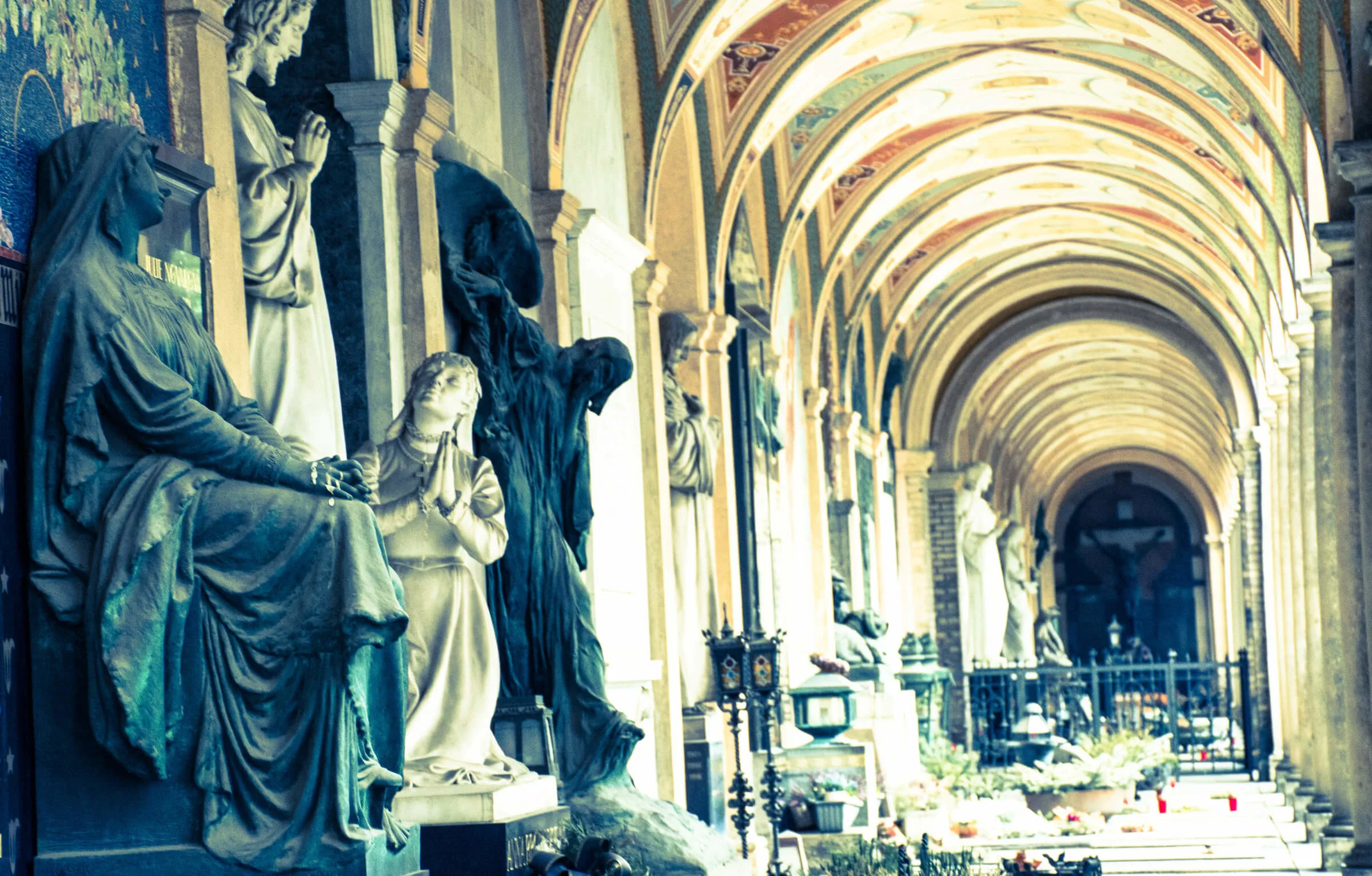
Vyšehrad Cemetery
 Highlight of Vyšehrad Fortress
Highlight of Vyšehrad FortressWander in a graveyard where many prominent Czechs are buried, such as famed composers Dvořák & Smětana.
The cemetery is filled with many tombs which are works of art in themselves, including several arcades with beautiful art-nouveau frescoes. The monumental Slavin tomb is a sort of pantheon of the Czech people, with over 55 prominent persons buried within it. Dvořák and Smětana have their own more modest graves.

Fortress Walls Viewpoint
 Highlight of Vyšehrad Fortress
Highlight of Vyšehrad FortressEnjoy stunning city views from atop the fortress walls.
Prague Castle and most of the city can be seen from above the cavernous Gorlice Hall. A walk along the fortress walls is a delightful experience, as you will enjoy numerous excellent vantage points on all sides of the fortress, enjoying Prague from a different perspective without all the crowds.
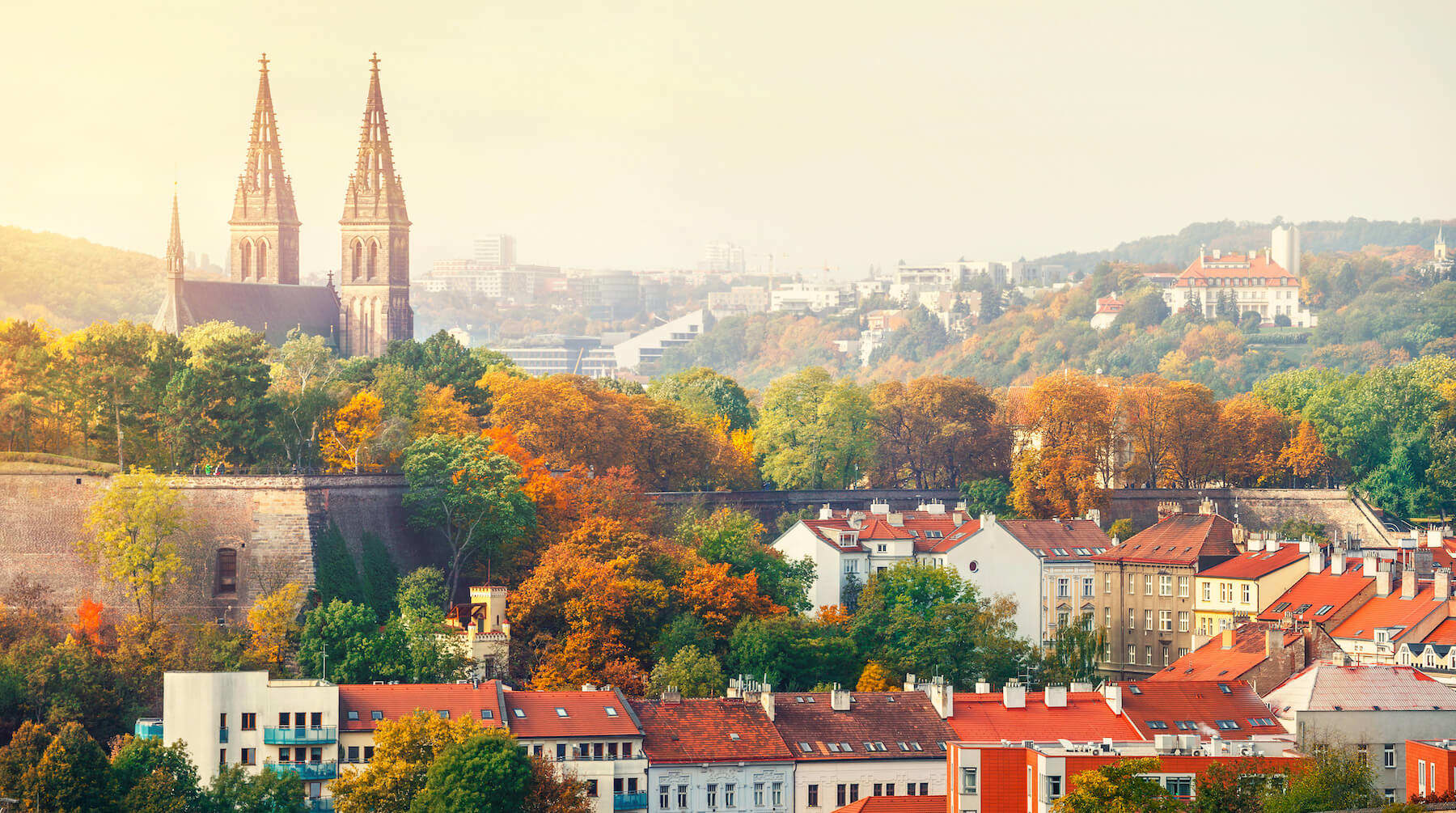
Brick Gate and Casemates
 Highlight of Vyšehrad Fortress
Highlight of Vyšehrad FortressVenture within the fortress's massive 17th-century walls and gates.
A tour through the Brick Gate on the fortress's north side will take you through the narrow underground passageways and casemates of the fortress. You will see a historical exhibit on Vyšehrad as well as the underground Gorlice Hall, where the original statues from the Charles Bridge are stored for safe-keeping (many of the statues on the bridge are copies).

Vyšehrad Cemetery
 Highlight of Vyšehrad Fortress
Highlight of Vyšehrad FortressWander in a graveyard where many prominent Czechs are buried, such as famed composers Dvořák & Smětana.
The cemetery is filled with many tombs which are works of art in themselves, including several arcades with beautiful art-nouveau frescoes. The monumental Slavin tomb is a sort of pantheon of the Czech people, with over 55 prominent persons buried within it. Dvořák and Smětana have their own more modest graves.

Fortress Walls Viewpoint
 Highlight of Vyšehrad Fortress
Highlight of Vyšehrad FortressEnjoy stunning city views from atop the fortress walls.
Prague Castle and most of the city can be seen from above the cavernous Gorlice Hall. A walk along the fortress walls is a delightful experience, as you will enjoy numerous excellent vantage points on all sides of the fortress, enjoying Prague from a different perspective without all the crowds.

Brick Gate and Casemates
 Highlight of Vyšehrad Fortress
Highlight of Vyšehrad FortressVenture within the fortress's massive 17th-century walls and gates.
A tour through the Brick Gate on the fortress's north side will take you through the narrow underground passageways and casemates of the fortress. You will see a historical exhibit on Vyšehrad as well as the underground Gorlice Hall, where the original statues from the Charles Bridge are stored for safe-keeping (many of the statues on the bridge are copies).

Vyšehrad Cemetery
 Highlight of Vyšehrad Fortress
Highlight of Vyšehrad FortressWander in a graveyard where many prominent Czechs are buried, such as famed composers Dvořák & Smětana.
The cemetery is filled with many tombs which are works of art in themselves, including several arcades with beautiful art-nouveau frescoes. The monumental Slavin tomb is a sort of pantheon of the Czech people, with over 55 prominent persons buried within it. Dvořák and Smětana have their own more modest graves.
prev
next


Day 8
Depart Prague
Day 8
Depart Prague

To Be Determined
Transfer to Airport by Taxi

Day 8
Depart Prague


What's Included In Your Trip

Pre-Paid Tours and Activities:
- Privately Guided Walking Tour of Amsterdam
- Canal Cruise in Amsterdam
- Prague Castle & Royal Route Guided Walk
- Prague Beer Experience - Tasting and Pub Walk

Accommodation:
- 4 nights at a hotel of your choice in Amsterdam
- 5 nights at a hotel of your choice in Prague

Go Real Travel Mobile App:
- Itinerary Plan & Reservations Info
- Points of Interest
- Detailed Travel Information
- Maps & Directions
Other Trips You May Like

5 Days
From$1645USD

7 Days
From$1495USD
One Week in Berlin & Prague: See the Highlights and Experience the Local Scene

Germany, Czech Republic

10 Days
From$1695USD
10 Day Munich and Prague Tour: Castles, Culture, and Beer Tasting Adventures

Germany, Czech Republic

8 Days
From$1499USD

9 Days
From$2240USD
Capitals, Canals, and Castles: A 9-Day Tour of Amsterdam, Berlin, and Prague

Netherlands, Germany, Czech Republic

21 Days
From$5789USD
Jewels of Europe: Art, History and Waterways in Paris, Amsterdam, Berlin, Prague, Vienna & Budapest

France, Netherlands, Germany, Czech Republic, Austria, Hungary

5 Days
From$700USD

5 Days
From$1700USD

7 Days
From$2299USD

5 Days
From$1645USD

7 Days
From$1495USD
One Week in Berlin & Prague: See the Highlights and Experience the Local Scene

Germany, Czech Republic

10 Days
From$1695USD
10 Day Munich and Prague Tour: Castles, Culture, and Beer Tasting Adventures

Germany, Czech Republic

8 Days
From$1499USD

9 Days
From$2240USD
Capitals, Canals, and Castles: A 9-Day Tour of Amsterdam, Berlin, and Prague

Netherlands, Germany, Czech Republic

21 Days
From$5789USD
Jewels of Europe: Art, History and Waterways in Paris, Amsterdam, Berlin, Prague, Vienna & Budapest

France, Netherlands, Germany, Czech Republic, Austria, Hungary

5 Days
From$700USD

5 Days
From$1700USD

7 Days
From$2299USD
prev
next
Featured Blogs
prev
next
Our Customers Say It Best
Marianne Strydom, Paarl, South Africa
I just wanted to thank you for organizing an amazing trip for me – I packed in so much in such a short period of time and everything was just perfect. The way you do things makes it possible to really get to know the destination, which for me as a travel agent could not have been better. 

Otto Chuy, Los Angeles, California
I am still surprised how everything worked as planned, without a hitch. All instructions in your itinerary were precise and correct. Your suggestions and comments in each of the locations we went to were very helpful. All your guides, without exception, were wonderful and exactly on time. 

Malini Dutta, Boston, Massachusetts
We can't thank you enough for the detailed plans, maps, and suggestions. It really felt that someone was holding our hands and showing us around. We had all the excitement of discovering foreign lands, with none of the problems that can happen while negotiating unfamiliar places. In fact, all the cities felt like home within a few hours of arriving and exploring. 

Bev and Mark Frankel, Williamsburg, Virginia
We could not be more pleased with Go Real Travel! You took the guess work out of things like public transport but still managed to allow us the freedom to tour as we wanted. Our guides were exceptional and every time I saw a Viking Cruise tour of 25 people, I realized the quality experience we were getting with Go Real. 

Marianne Strydom, Paarl, South Africa
I just wanted to thank you for organizing an amazing trip for me – I packed in so much in such a short period of time and everything was just perfect. The way you do things makes it possible to really get to know the destination, which for me as a travel agent could not have been better. 

Otto Chuy, Los Angeles, California
I am still surprised how everything worked as planned, without a hitch. All instructions in your itinerary were precise and correct. Your suggestions and comments in each of the locations we went to were very helpful. All your guides, without exception, were wonderful and exactly on time. 

Malini Dutta, Boston, Massachusetts
We can't thank you enough for the detailed plans, maps, and suggestions. It really felt that someone was holding our hands and showing us around. We had all the excitement of discovering foreign lands, with none of the problems that can happen while negotiating unfamiliar places. In fact, all the cities felt like home within a few hours of arriving and exploring. 

Bev and Mark Frankel, Williamsburg, Virginia
We could not be more pleased with Go Real Travel! You took the guess work out of things like public transport but still managed to allow us the freedom to tour as we wanted. Our guides were exceptional and every time I saw a Viking Cruise tour of 25 people, I realized the quality experience we were getting with Go Real. 



Explore cities in more detail

Brussels
It feels as though everything in Brussels is tinted with gold. From the gilded rooftops of the old houses on the Grand Palace to the foil-wrapped bonbons piled in chocolatier windows, Brussels seems to sparkle and wink at you around every corner. Aside from the lustrous architecture and Trappist ales, this shiny city is probably still best known for its iconic street food options: salty, golden fries, and fluffy, honey-colored waffles. While a major political center, home of the EU and NATO, don’t be fooled by Brussels stern ‘Eurocratic’ facade. Brussels revels in cheeky humor and mischief. So much so, Brussel’s beloved mascot, the ‘Manneken Pis’, is a statue of a small child urinating into a fountain. The city takes great pleasure in dressing this statue in festive-themed costumes. It’s no surprise that the artist Magritte, one of the great visual tricksters of the 20th century, called Brussels home. After a few days exploring the city, and taking in its sights and scenes, you’re sure to come away smiling.

Learn About Brussels
Build Brussels Trip
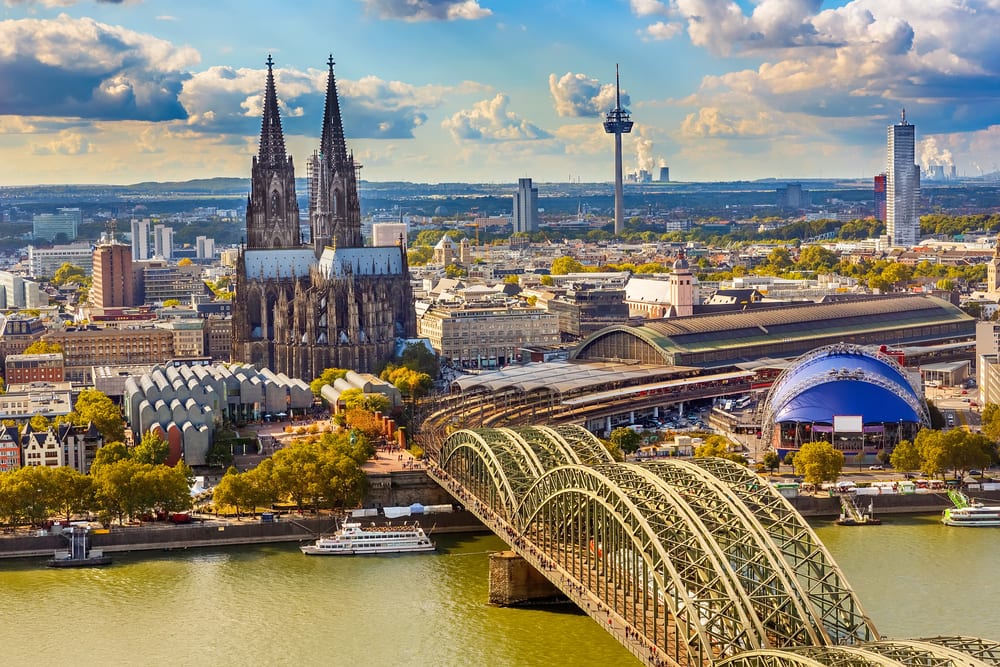
Cologne
As you travel through Western Germany, Cologne is a cheerful, fun city to stop for a night or two. Flanking both sides of the Rhine river, Cologne's delightful architectural pastiche reflects the breezy anything-goes attitude of its inhabitants. Like most German cities, Cologne took a hit during WWII, losing some of its old-world buildings and neighborhoods. However, thanks to the endurance of the Cologne Cathedral and iconic Hohenzollern Bridge, the city has kept its identity close to hand. Sometimes quite literally in the form of a glass of sparkling Kölsch local beer. A visit to Cologne should always include paying a call to its eponymous Cathedral. A sensational, Gothic behemoth of a building and a UNESCO Heritage Site, Cologne Cathedral will get you right in the heart, humbling all who enter it. Just outside the cathedral, the Hohenzollern Bridge spans the Rhine, with three iron truss arches looping over the river like the bounces of a skimming stone. After wandering the riverside, if you're looking for some indulgence, Cologne's Chocolate Museum is an eternally popular choice. Maybe you'll be under the influence of the cocoa, but at the end of a day in Cologne, life can seem pretty sweet.

Learn About Cologne
Build Cologne Trip
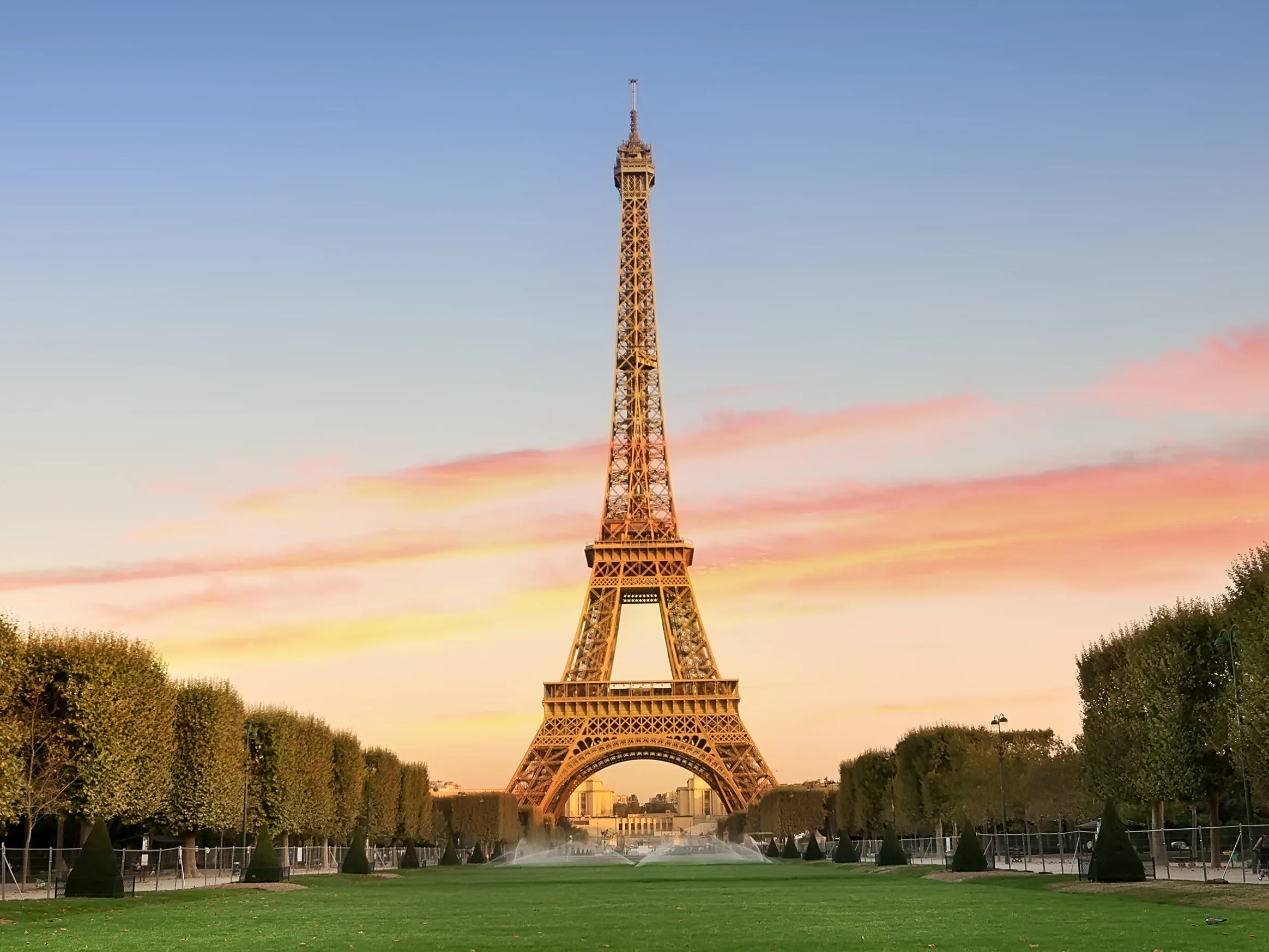
Paris
The magic of Paris is undeniable. This is the most romantic destination in Europe, and surely the number one bucket list destination of all time. If you want to say you've traveled, you have to visit Paris at least once. Along with classic must-sees like the Eiffel Tower and the Sacre-Coeur, there is so much to see and do in Paris that it helps to narrow it down by interest. Fashion and shopping enthusiast? Look no further than the Galeries Lafayette, Avenue des Champs-Élysées, or the Marais. Art aficionado? Once you're done with the Louvre, make a start on the Musée d'Orsay. History buffs won't be able to walk a block without uncovering a monument to Napoleon or Louis XIV. If you visit Paris with a foodie, be warned — you'll gaze in a lot of patisserie windows, and sample your weight in croissants. Because Paris always has so much on offer, it never grows old. At dusk, as you stroll the wide boulevards past Haussmann apartment buildings and sharply dressed Parisians, or gaze down at the city from the hill at Montmarte, you might find yourself saying 'Paris Je t' aime'. This is, after all, the City of Love.

Learn About Paris
Build Paris Trip
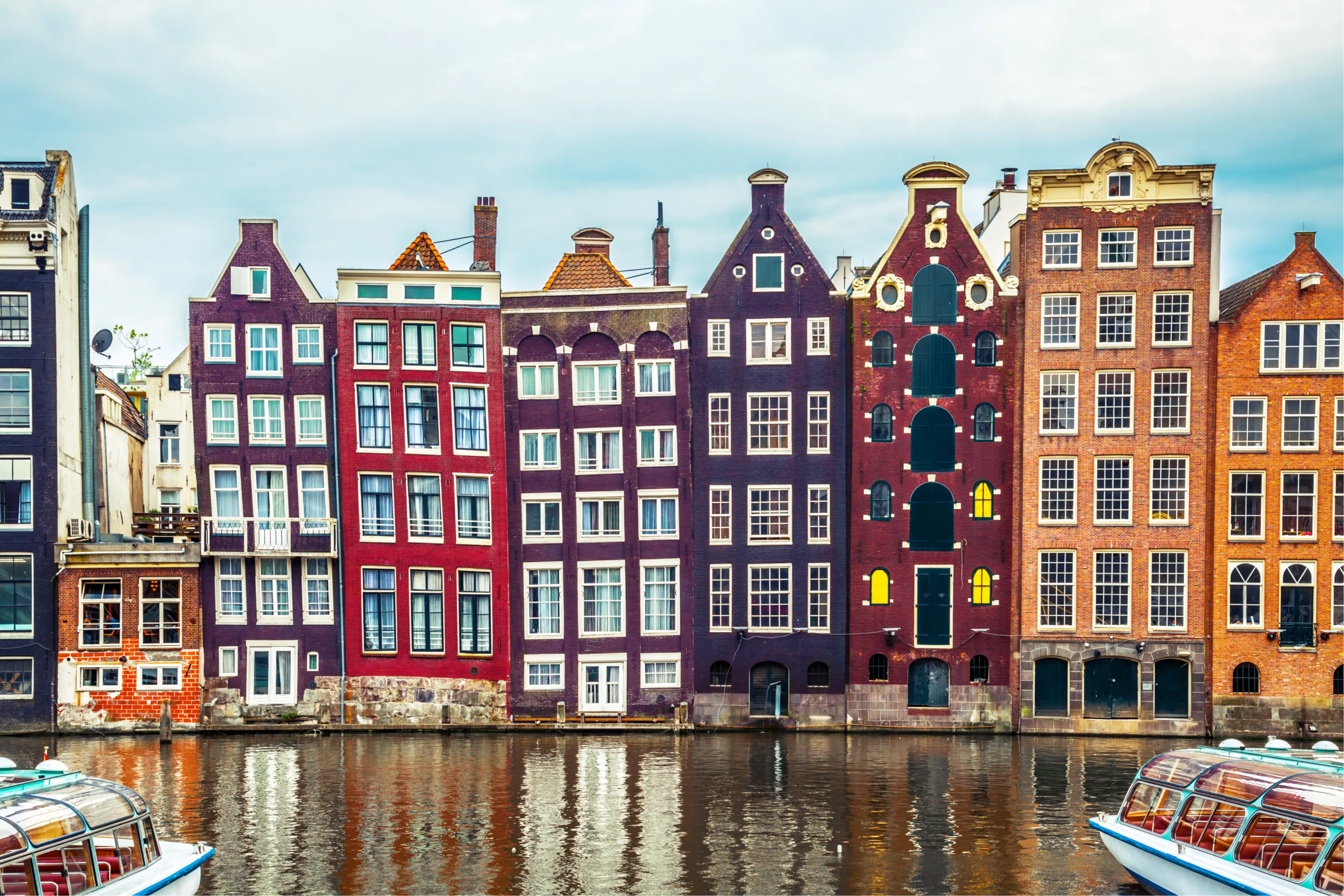
Amsterdam
A waterside metropolis with a low-key vibe, a visit to Amsterdam is as fun and freewheeling as a fixed-gear bicycle. This is the city where you can let it all go. The streets of Amsterdam chime with bicycle bells and the laughter of people making their way between bars. Yellow wheels of cheese line shop windows, and in springtime, market stalls are abundant with the famous Dutch tulips. Younger than other cities in the Netherlands, Amsterdam sprang to life in the 17th century, when it became flush with trade from the Dutch colonies. From the gable tipped houses standing shoulder-to-shoulder on the canals to the Rembrandt paintings hanging on the walls of the Rijksmuseum, Amsterdam is strewn with relics from the Dutch Golden Age. Whether you rent a bicycle, float down a canal, or just sip on an amber-colored lager and watch the world go by, Amsterdam makes a lasting impression from start to finish.

Learn About Amsterdam
Build Amsterdam Trip

Prague
The city of Prague is indisputably the gem of Central Europe. Full of history, culture, and classic Czech pubs around every corner, Prague is teeming with nooks and crannies just waiting to be discovered. The narrow cobblestone streets and warm red rooftops give the city a homey feel, while the well-preserved medieval architecture transports you back in time. Walking across the Charles Bridge with the view of the Prague Castle will make you feel like you’re living in a fairytale, and you might as well be. As an up-and-coming destination, Prague is a perfect mix of classic and modern. New trendy cafes and bistros are always popping up, and you can always find a group of lively locals chowing down on goulash and quaffing pivo (the best beer in Europe!) at traditional Czech restaurants across the city. The clash of modernity and tradition, preservation and innovation, gives this city a mysterious air that you won’t soon forget.

Learn About Prague
Build Prague Trip

Frankfurt
Dubbed ‘Mainhatten’ for its glass highrises, financial prowess, and proximity to the Main River, Frankfurt offers a fascinating glimpse into the ‘engine room’ of Europe’s economy with an unexpected twist. Among the glass and steel buildings, the old-worldly Römerberg square will give you a double-take. The square’s 15th-century half-timbered houses, old statues, and church spires contrast dramatically against the modern 21st-century skyscrapers beyond. If you visit at Christmas, the Römerberg is truly special, aglow with the light of the tallest Christmas tree in Germany. The square fills with stalls selling handicrafts, and the air is scented with hot apple wine, honey, and cinnamon. Delve deeper into Frankfurt and you’ll find a substantial museum district, the Museumsufer (Museum Embankment). This area features a cluster of twelve museums on either side of Main River. This includes the Städel, home to Tischbein’s famous painting of renowned writer Johann Wolfgang von Goethe, one of Frankfurt’s most prestigious sons. The more time you spend in Frankfurt, the more you’ll discover a highly cultured city lurking beneath its glass facades. If you have the time, Frankfurt is certainly worth a second look.

Learn About Frankfurt
Build Frankfurt Trip

Brussels
It feels as though everything in Brussels is tinted with gold. From the gilded rooftops of the old houses on the Grand Palace to the foil-wrapped bonbons piled in chocolatier windows, Brussels seems to sparkle and wink at you around every corner. Aside from the lustrous architecture and Trappist ales, this shiny city is probably still best known for its iconic street food options: salty, golden fries, and fluffy, honey-colored waffles. While a major political center, home of the EU and NATO, don’t be fooled by Brussels stern ‘Eurocratic’ facade. Brussels revels in cheeky humor and mischief. So much so, Brussel’s beloved mascot, the ‘Manneken Pis’, is a statue of a small child urinating into a fountain. The city takes great pleasure in dressing this statue in festive-themed costumes. It’s no surprise that the artist Magritte, one of the great visual tricksters of the 20th century, called Brussels home. After a few days exploring the city, and taking in its sights and scenes, you’re sure to come away smiling.

Learn About Brussels
Build Brussels Trip

Cologne
As you travel through Western Germany, Cologne is a cheerful, fun city to stop for a night or two. Flanking both sides of the Rhine river, Cologne's delightful architectural pastiche reflects the breezy anything-goes attitude of its inhabitants. Like most German cities, Cologne took a hit during WWII, losing some of its old-world buildings and neighborhoods. However, thanks to the endurance of the Cologne Cathedral and iconic Hohenzollern Bridge, the city has kept its identity close to hand. Sometimes quite literally in the form of a glass of sparkling Kölsch local beer. A visit to Cologne should always include paying a call to its eponymous Cathedral. A sensational, Gothic behemoth of a building and a UNESCO Heritage Site, Cologne Cathedral will get you right in the heart, humbling all who enter it. Just outside the cathedral, the Hohenzollern Bridge spans the Rhine, with three iron truss arches looping over the river like the bounces of a skimming stone. After wandering the riverside, if you're looking for some indulgence, Cologne's Chocolate Museum is an eternally popular choice. Maybe you'll be under the influence of the cocoa, but at the end of a day in Cologne, life can seem pretty sweet.

Learn About Cologne
Build Cologne Trip

Paris
The magic of Paris is undeniable. This is the most romantic destination in Europe, and surely the number one bucket list destination of all time. If you want to say you've traveled, you have to visit Paris at least once. Along with classic must-sees like the Eiffel Tower and the Sacre-Coeur, there is so much to see and do in Paris that it helps to narrow it down by interest. Fashion and shopping enthusiast? Look no further than the Galeries Lafayette, Avenue des Champs-Élysées, or the Marais. Art aficionado? Once you're done with the Louvre, make a start on the Musée d'Orsay. History buffs won't be able to walk a block without uncovering a monument to Napoleon or Louis XIV. If you visit Paris with a foodie, be warned — you'll gaze in a lot of patisserie windows, and sample your weight in croissants. Because Paris always has so much on offer, it never grows old. At dusk, as you stroll the wide boulevards past Haussmann apartment buildings and sharply dressed Parisians, or gaze down at the city from the hill at Montmarte, you might find yourself saying 'Paris Je t' aime'. This is, after all, the City of Love.

Learn About Paris
Build Paris Trip

Amsterdam
A waterside metropolis with a low-key vibe, a visit to Amsterdam is as fun and freewheeling as a fixed-gear bicycle. This is the city where you can let it all go. The streets of Amsterdam chime with bicycle bells and the laughter of people making their way between bars. Yellow wheels of cheese line shop windows, and in springtime, market stalls are abundant with the famous Dutch tulips. Younger than other cities in the Netherlands, Amsterdam sprang to life in the 17th century, when it became flush with trade from the Dutch colonies. From the gable tipped houses standing shoulder-to-shoulder on the canals to the Rembrandt paintings hanging on the walls of the Rijksmuseum, Amsterdam is strewn with relics from the Dutch Golden Age. Whether you rent a bicycle, float down a canal, or just sip on an amber-colored lager and watch the world go by, Amsterdam makes a lasting impression from start to finish.

Learn About Amsterdam
Build Amsterdam Trip

Prague
The city of Prague is indisputably the gem of Central Europe. Full of history, culture, and classic Czech pubs around every corner, Prague is teeming with nooks and crannies just waiting to be discovered. The narrow cobblestone streets and warm red rooftops give the city a homey feel, while the well-preserved medieval architecture transports you back in time. Walking across the Charles Bridge with the view of the Prague Castle will make you feel like you’re living in a fairytale, and you might as well be. As an up-and-coming destination, Prague is a perfect mix of classic and modern. New trendy cafes and bistros are always popping up, and you can always find a group of lively locals chowing down on goulash and quaffing pivo (the best beer in Europe!) at traditional Czech restaurants across the city. The clash of modernity and tradition, preservation and innovation, gives this city a mysterious air that you won’t soon forget.

Learn About Prague
Build Prague Trip

Frankfurt
Dubbed ‘Mainhatten’ for its glass highrises, financial prowess, and proximity to the Main River, Frankfurt offers a fascinating glimpse into the ‘engine room’ of Europe’s economy with an unexpected twist. Among the glass and steel buildings, the old-worldly Römerberg square will give you a double-take. The square’s 15th-century half-timbered houses, old statues, and church spires contrast dramatically against the modern 21st-century skyscrapers beyond. If you visit at Christmas, the Römerberg is truly special, aglow with the light of the tallest Christmas tree in Germany. The square fills with stalls selling handicrafts, and the air is scented with hot apple wine, honey, and cinnamon. Delve deeper into Frankfurt and you’ll find a substantial museum district, the Museumsufer (Museum Embankment). This area features a cluster of twelve museums on either side of Main River. This includes the Städel, home to Tischbein’s famous painting of renowned writer Johann Wolfgang von Goethe, one of Frankfurt’s most prestigious sons. The more time you spend in Frankfurt, the more you’ll discover a highly cultured city lurking beneath its glass facades. If you have the time, Frankfurt is certainly worth a second look.

Learn About Frankfurt
Build Frankfurt Trip
prev
next


 Map of Your Itinerary Route
Map of Your Itinerary Route
Zoom In to the cities to see your itinerary in more detail


 4.8
4.8 







